The Swedish Ship Götheberg, the world’s largest wooden sailing ship, a full-sized replica of an 18th century ship. The original ship was launched in 1738 and went through three adventurous voyages to China before it’s wrecking outside the Fortress of Älvsborg. The Swedish Ship sails again after six years.
Follow the ship’s Summer 2021 Expedition in real time on Marine Traffic!
Limited sailings are due this year. However a longer expedition towards China is due to arrive in 2022 after several stops in the Mediterranean, the Suez Canal, India and several more port stops in the far east.
Greencarrier AB – as part of its involvement in the Sustainability Development Goal 14 (SDG 14) “Conserve and sustainably use the oceans, seas and marine resources for sustainable development” – has acquired all shares in Svenska Ostindiska Companiet AB – SOIC AB – from foundation Ostindiefararen Götheborg. Greencarrier AB thereby also takes over the ownership and responsibility for “The Swedish Ship Götheborg”.
THE SHIP
It’s not easy to build an 18th century ship in full 1:1 scale without the help of any original drawings. It doesn’t make it any easier when solely using the tools, building methods and materials of that time. In addition to that, the ship has to fulfill today’s safety requirements from authorities. However, sometimes, impossible dreams grow wings and take flight. The Swedish Ship Götheborg was, during its expeditions, the largest sailing wooden ship in the world.
Ship Facts
- Call Sign : SLOA
- IMO : 8646678
- MMSI : 266198000
- Main Power : 2 x 404kW
- Ship Type : Sailing vessel
- Year Built : 2005
- Length x Width : 47 x 11 m
- Gross Tonnage : 788 ton
The Hull
Laying the keel of the new Swedish Ship Götheborg occurred on June 11, 1995. This had been preceded by several years of preparation, and much more work was yet to come before the construction of the new ship could commence one year later. The three materials of the keel that were placed on the keel blocks are the largest parts present in the hull – the oak logs weighed about ten tonnes before the materials was cut out. Measured in logs, we used 4,000 m3 of oak and pinewood before finishing the hull. After making a 1:1 scale drawing of the hull form, the manufacturing of the beam could begin – an effort that alone would last for two whole years. When all the beams and stems were elevated, one could observe how big and impressive the ship would become.
The next step was to fill the beams with planks, on both the inside and outside, to give the hull a longitudinal strength and make it waterproof. The work of the deck planking requires a great deal of craftsmanship; each and every plank is unique, and the ones up to 16 centimetres in thickness have to match the beams, stems, and the other planks. To shape the planks in accordance with the hull, they were steamed for several hours in order for them to soften. Thereafter, with the help of large screw clamps, we had to quickly bend the plank against the beams before hardening again. Once the planks that would bear the deck beams were in place, they could be lifted into the hull. The deck planks would then be placed on the deck beams.
There are three whole decks on the ship: a lower deck, an upper deck, and a weather deck. Further, the stern has a cabin deck and sundeck. To make the hull waterproof, every plank has a wedge-shaped aperture, a joint, into which tarred flax was put. Not only does this make the hull waterproof, but also more resilient and strong. There is a total of 16 kilometres of joints in the deck and planking. Given that a skilled person would caulk 40 metres per day, one could understand that this was a time consuming operation that required endurance
The last big step that remained before launching was to protect the lower part of the hull from ship worms that are found in saltwater and that feed on wood. A blanket made out of tar and cattle hair was laid close to the planking as a protection from the worms. The exterior of the blanket was nailed with thin pine wood planks, and finally anti-fouling paint.

- Length : 47 meters
- Width : 11 meters
- Aft Depth : 5,25 meters
- Material : Pine and oak
- Deck : 3 and a sundeck aft
- Cabins : 20
- Fixed beds : 42
Interior
We have tried to keep the spaces used by the 18th century crew as historically accurate as possible. For instance, the green colour of the furniture comes from a board of a cutting found during the excavation. The main body of today’s crew and most of the modern technology are placed in the space that at the time used to be the cargo hold. A lot of effort has also been put into concealing all the pipes, cables and culverts passing through the interior.
Today, most of the technical equipment is found in the room at the bottom of the ship: an engine room with generators and propulsion machinery, a tank room for diesel and water, and a storage of supplies under the galley of the ship’s forepart. In the forepart of the ship’s lower deck, there is a galley where food is prepared. The rear of the galley has two crew halls for the 50 students to sleep, either in a hammock or a berth, while the cabins for the permanent crew are found in the stern ship. The upper deck mainly consists of the so-called gun deck, in which the 18th century crew settled. During voyages, this was used as a common space for the entire crew where they dined and socialised. The aft part of the deck contains cabins for the permanent crew and the great cabin.
At the rear end of the weather deck there is a cabin deck and sundeck. The cabin deck, named after the cabins of the captain and chief officer, is found under the aft, while the deck protecting the helm and steering position from the sun is found under the sundeck.
Sails
The Swedish Ship Götheborg has 26 sails with a total area of 1,964 m². The regular set of sails is comprised of 18 sails with a total area of 1,550 m².
Linen is a durable material that existed in Sweden during the 17th and 18th centuries extensively. Götheborg has three different sails aboard, the most common being the Square Rigs. These sails are laced to yards with with lace lines och are hauled down using haul and tacks to the desired trim. The biggest sail on board is the Main Topsail with an area of almost 250 square meters. There is a total of nine Square Rigs on board that make up a total of 1300 square meters.
The Staysail is smaller and is a triangular sail that is diagonally hoisted between the masts. The use f the Staysail was only introduced in the beginning of the 18th century. When looking at older ships, for instance, like the Wasa War Ship from the 17th century, there were no Staysails at all. From the six Staysails at “Götheborg” the Jib is the biggest and the Gallant Staysail the smallest.
Apart from the Square Rigs and Staysail, there is the Lateen Mizzen, which is the Sail Aft. The Spanker, which is a lateen sail, is listed on a sprit and is primarily used to balance the vessel’s weather helm and lee helm.
All of the sails aboard are made, maintained and repaired by hand. Firstly, all the canvasses are stitched together, forming a large enough area. The sail is then cut out and the sides are folded. Once this is done, details such as cringles and boltropes are stitched on. During voyages, sailmakers were always present on board to repair the sails if any damages occured. It takes eight years for a sailmaker to make all the sails for the ship.

1. Lateen Mizzen
2. Mizzen Topsail
3. Main Topgallant sail
4. Main Topsail
5. Main Sail
6. Fore Topgallant sail
7. Fore Topsail
8. Fore Sail
9. The Jib
10. Fore Topmast Staysail
11. Spritsail Topsail
12. Spiritsail
Apart from the above, Götheborg is able to raise eight Studdingsails that were hoisted upon the Squaresail with the help of rods that prolong the yard. These were only used during lighter winds. The Studdingsails are comprised of: two Fore-top Studdingsails, two Fore Studdingsails, two Main Top Studdingsails, and two Main Studdingsails.
- Type of sails : Square Rig, Staysail, Lateen, Studdingsail
- Number of sails : 26, including the Studdingsails
- Smallest sail : Main topgallant staysail
- Material : Canvas
- Largest sail : Main topsail, 250 square meters
- Total sail area : 1 964 square meters
Rigging
The 18th century East Indiamen were mainly downwind vessles. The rigging is an exact reconstruction of the original one from the 18th century. Rigging is the common title of all masts, rods, and other spars – as in yards, bowsprits, and sprits – as well as sails, blocks, and ropes.
The ropes of the standing rigging (the shroud and the stay) and the running rigging together have a weight of about 20 tons. There exist no contemporary methods for the maneuver of the rigging and was completely handled with manpower. The Capstan on board, which is aimed to provide extra power when needed, was also managed with manpower.
The East Indiaman Götheborg is a three-masted ship with Square Rigs (square sails) on all three masts. The mainmast and the foremast have topgallant sails, topsails and courses. The Aftermast has a Topsail and a Latin type Spankersail. In the bow is the bowsprit with a jib boom, and hanging below that are two more Square Sails: the Spritsail and the Sprit-topsail. A ship of this kind used to be called a Frigate-rigged Ship, although we nowadays refer to it as a Full-rigged Ship.
- Number of blocks : approx. 650
- Number of masts : 3
- Number of yards : 10
- Heaviest yard : 1,7 ton
- Longest yard : 23 m
- Mast material : Pine and Fir
- Yard material : Pine and Fir
- Rope/cordage : 20 tons hand-made hemp
- Type of rig : Full-rigged Square sails
- Hight above waterline : 47 m
Technology
In order to ensure the safety of the professional crew on board which is comprised of 50 deckhands, while sailing the world’s oceans, authorities and classification bodies require an amount of technical equipment.
The ship contains propulsion machinery, power generators, pumps, equipment for producing drinking water, high-pressure fire extinguishers, a modern kitchen with fridges and freezers, ventilation, air conditioning, and a complete laundry room. These are all well concealed in the interior of the ship, creating ‘two ships in one’ – a historical and a modern one.
Navigation
The ship is equipped with GPS, radar, satellite radio, etc. Even old navigation instruments such as Octants and a Dutchman’s log have been used for study purposes. Modern equipment is an official safety requirement from the authorities. Without this equipment the ship would not be allowed to sail the world’s oceans.
Monitoring system
There are around 600 monitored spots aboard Götheborg. The system can be used in turning on pumps, opening valves, regulating fans, and much more.
In order to plan the vessel’s technical maintenance, there are time meters on all equipment. During voyages the most critical temperature, pressure, fuel, and water levels are read and registered every four hours around the clock. Everything is meticulously documented which helps the technical staff to monitor and look after all the equipment in the best possible way. The monitoring system also includes highly sophisticated fire and safety equipment.
Engines and propellers
The vessel is fitted with two adjustable propellers and two 404 kW engines. The electricity supply comes from two 180 kW generators, in addition to an emergency generator. Apart from propulsion machinery and generators, the engine room is equipped with pumps, a boiler, a bilgewater separator, and an air compressor.
Tank rooms
The front cargo room has two tank rooms filled with technical equipment. Between the rooms, there are five waterproof steel bulkheads. Furthermore, two large floodable bilge pumps are able to pump up to 500 tonnes an hour. The fuel room is located in the aftmost tank room and can hold 36 000 litres in total. A full capacity of the machinery and generator consume approximately 2000 litres a day. The vessel’s toilet system is connected to 12 toilets around the ship and is also located in the stern. The water room is found in the front tank room and contains water production equipment and a laundry room.
The galley
The Galley is located one deck below, and is an ultra-modern compact kitchen with a convection oven, tiltable pans and cookware, a cold bench, and more. The scullery is located next to the Galley, containing a dishwasher and other equipment.
- Engines: Two Volvo Penta 404 kW
- Satellite : Satcom B
- Fuel tanks :36 000 litre
- Bilge pump : 500 tons/hour
- Log : Electrical “Dopplerlogg”
- Navigation : GPS, radar, gyrocompass, ECDIS
- Generators: Two 180 kW, Volvo Penta 103

Crew
During the voyages of the East Indiaman Götheborg, the crew consisted of about 80 persons. One fourth of these were comprised of a professional crew, while the remaining were volunteer crew and Deckhands.
Commander/Captain
The commander was the highest authority body on board and was to a large extent responsible for the overall safety of the ship and the crew.
Chief Officer
The Chief Officer was the commander’s deputy and was responsible for the daily management on board. The Chief Officer, together with the seaman, was also responsible for the inspection and maintenance of the rigging, and supporting the Deck Officers and Watch Leaders in handling the rigging.
2nd Officer, Navigation Manager
The 2nd Officer was responsible for preparing nautical charts for the voyages, planning sailing routes, controlled editions of navigational literature, and corrected charts. S/he was also responsible for inspections, tests and maintenance of the navigation and communication equipment.
2nd Officer, Chief of Security
The second 2nd officer was responsible for inspections, tests, and maintenance of the safety equipment on board. S/he also planned and implemented safety exercises together with the Commander, Chief Officer and Technical Manager.
Chief Engineer
The Chief Engineer was responsible for the operation and maintenance of the ship’s machinery, as well as rganizing and implementing the ship’s fire and safety exercisese, in cooperation with the Chief Officer. S/he also was also in charge of planning and preparing the safety crew.
1st Engineer
The 1st Engineer was the Chief Engineer’s deputy and was in charge of the day-to-day technical management.
Engineer
The Engineer carried out the daily technical operations and maintenance of the machinery and technical department.
Bosun
The Bosun led the deck crew in the day-to-day work with the Hull, Deck, and Rigging. S/he also inspected and maintained the rigging, as well putting the deck crew to work.
Watch Leader
The Watch Leader was in charge of leading the Deckahands in their daily tasks on board, such as the handling of sails and rigging, cleaning the Decks, Cabins, and other spaces. They also instructed the Watch Guards in seamanship.
Carpenter
The Carpenter was responsible for the maintenance and manufacturing on board, tackling both minor and major repairs.
Sailmaker
The Sailmaker was responsible for the repairs and maintenance of the sails on board. The East Indiaman Götheborg has 1964 square meters of sail and a number of reserve sails for the most essential sails.
Chief and Second Cook
What would the East Indiaman Götheborg be without good food, prepared by the highly appreciated ship Cooks? From early morning till late evening, the Cooks worked with preparing and cooking breakfast, lunch, and supper for the 80 persons on board. Between the meals, morning and afternoon coffee was served. When extra help was needed in the kitchen, the Cooks received assistance from certain Deckhands. The Chief Cook was responsible for all the purchases to the Galley and supervised the work of the Second Chef and Messman.
Messman
The Messman was responsible for the logistics for the meals served on board and led the Deckhands whom assisted in the Galley. The Messman was also responsible for the ship’s laundry, as well as the cleanliness and tidiness of the Galley and Aft Pantry.
Deckhand
A Deckhand was part of one of three “watch teams” under the leadership of a Watch Leader. The duties involved watch keeping at sea and ports, sail and rig management, which meant working on high altitudes, maintenance on the deck, cleaning and assisting in the galley.
Ship Doctor
The Doctor was responsible for the medical care on board and reported directly to the Commander. The Doctor contributed to preventive health care and carried out other tasks when necessary. Doctors were only on board during long voyages when it could be difficult to get medical assistance from ashore. When the Doctor was not present, a Deck Officer would be in charge of healthcare matters.
Nurse
The Nurse was subordinate to the Doctor and was responsible for the ship’s medical supplies. A Nurse was always present on all voyages.
- Crew : Max 80 during voyages
- Professional crew : approx. 20
- Deckhands : approx. 60
- Minimum Age : 18 years
- Provision : 80 persons for 60 days
- Spare Provision : 80 persons for 30 days
Source: The Swedish Ship Götheborg, segment of Greencarrier Group.

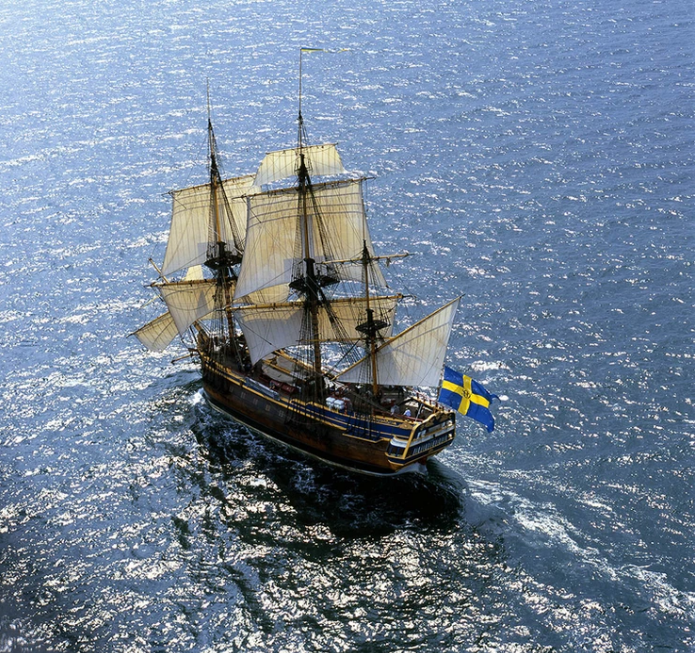
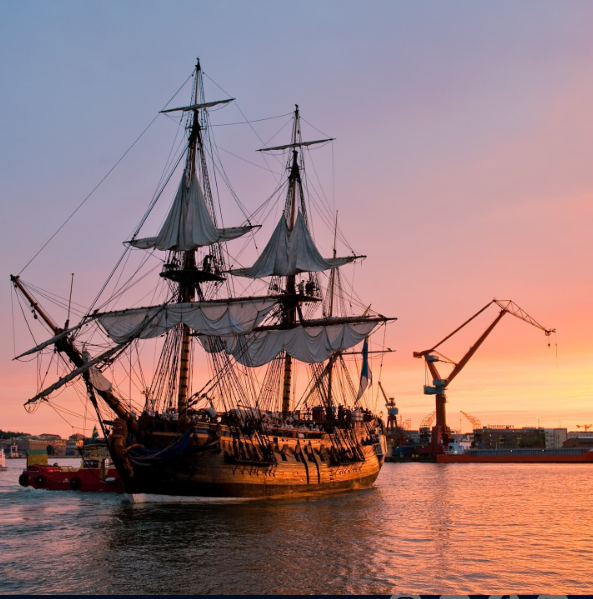
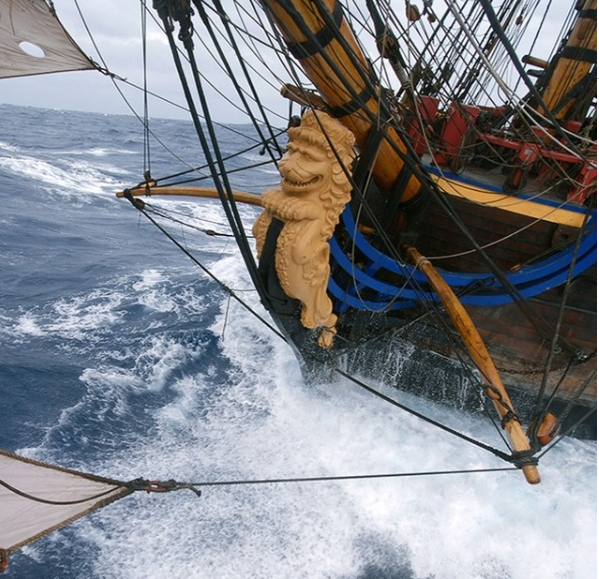
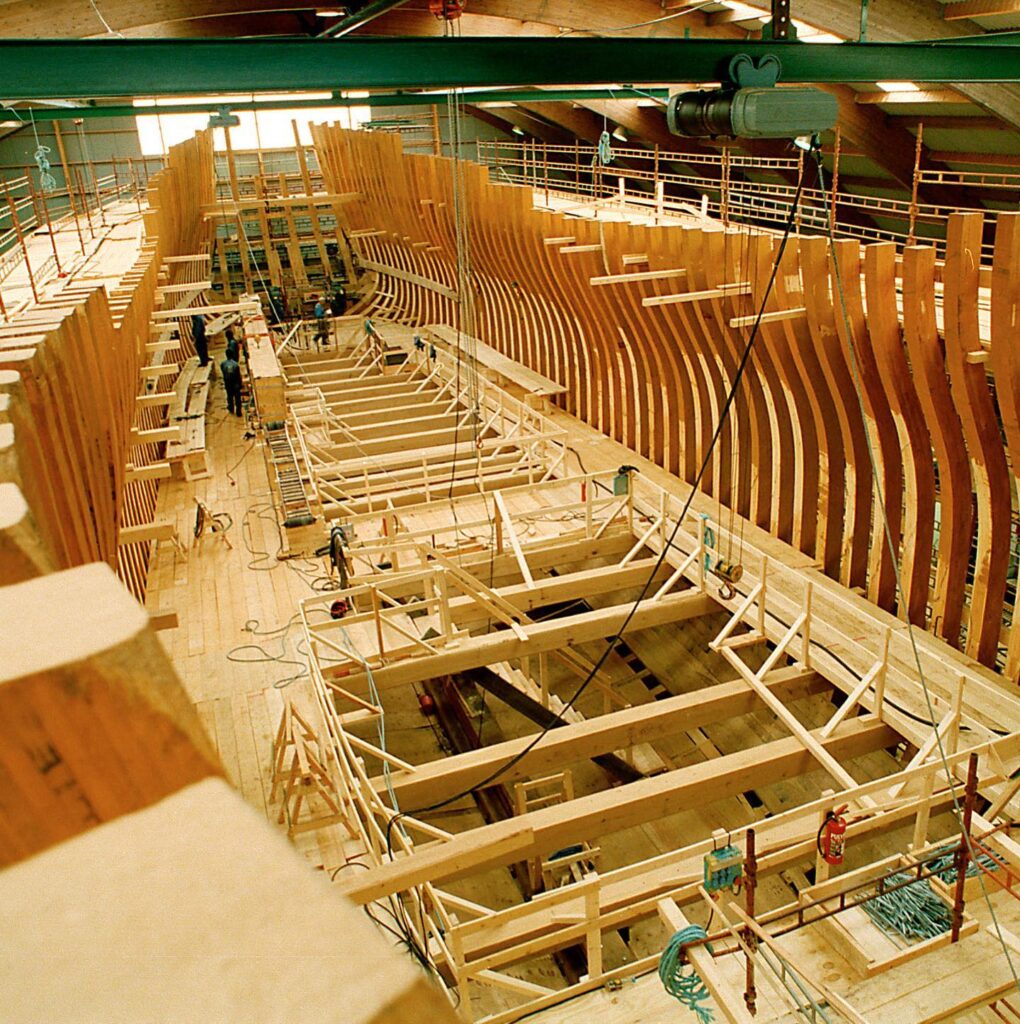
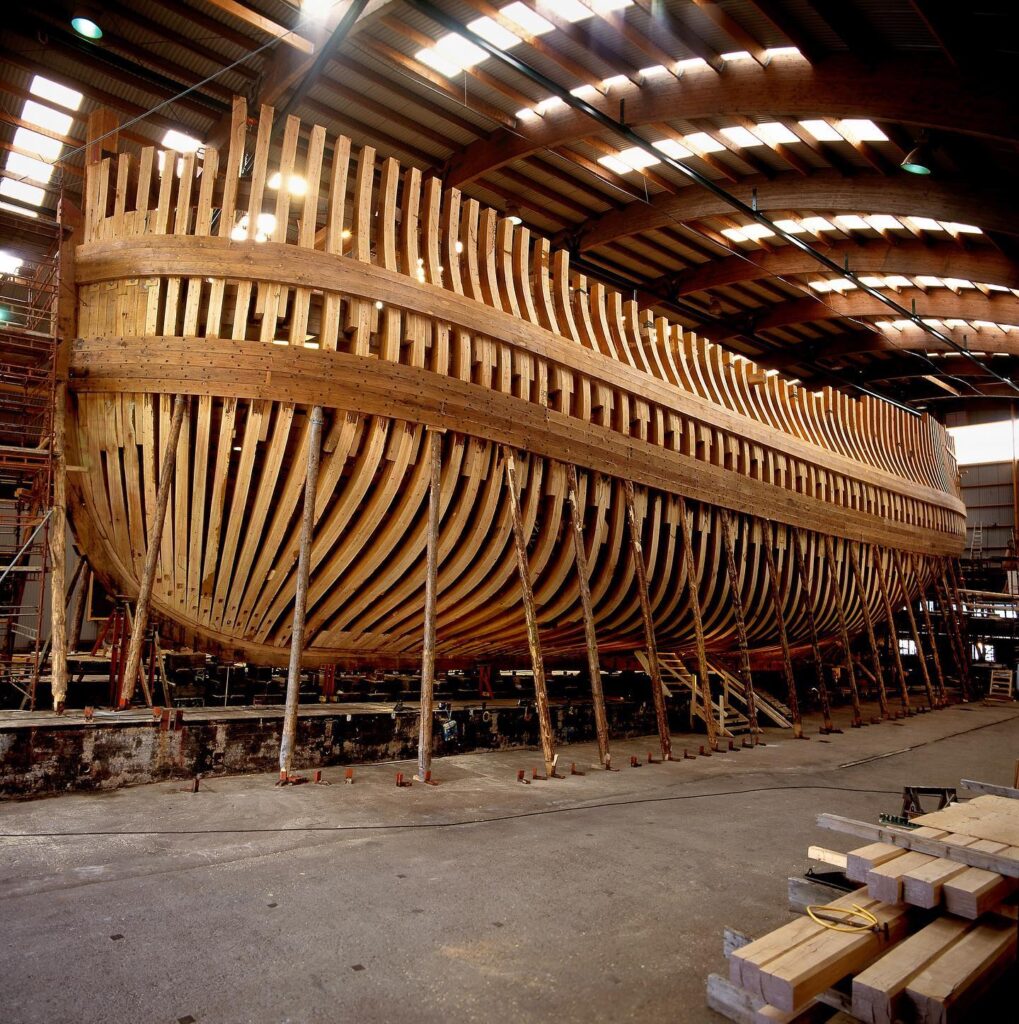

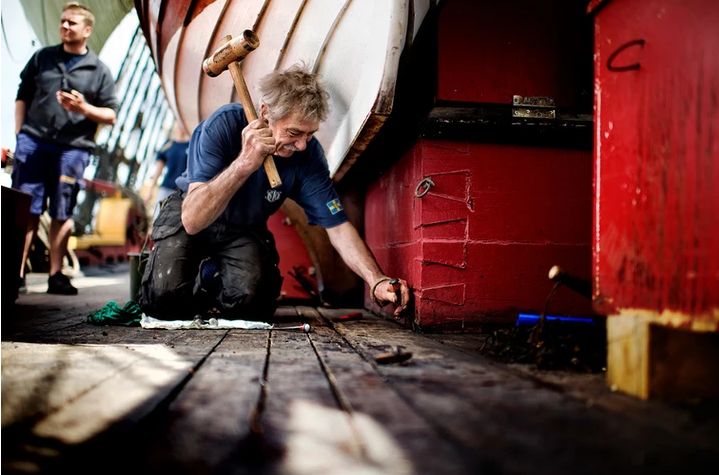
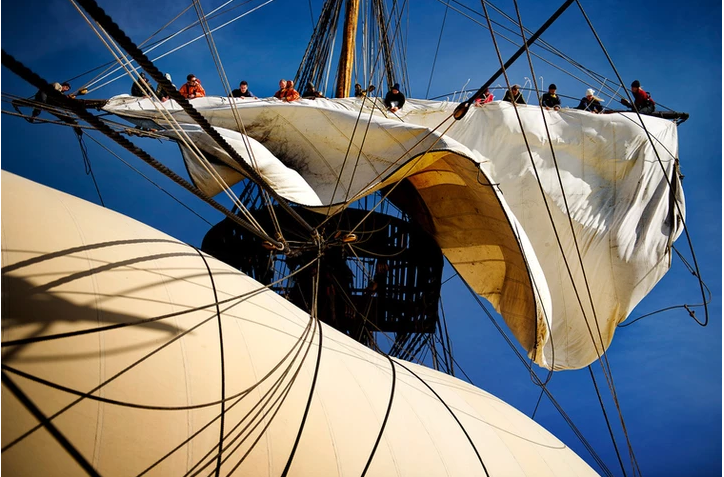
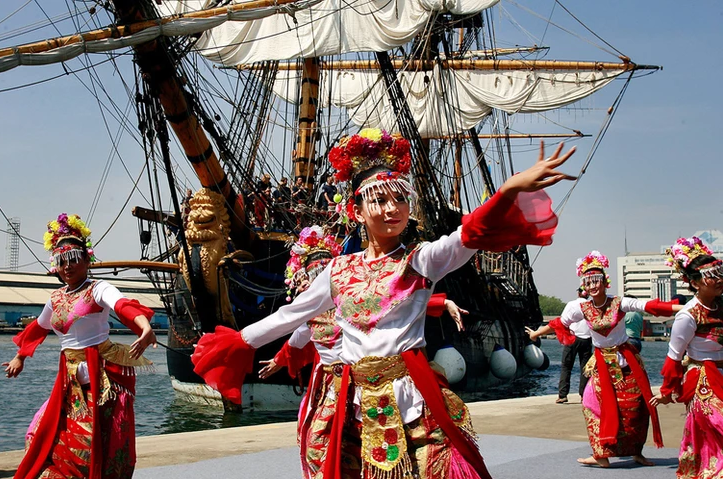
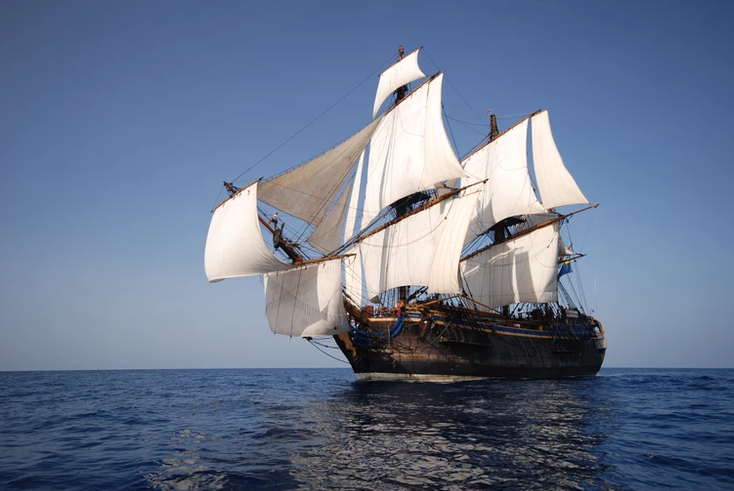
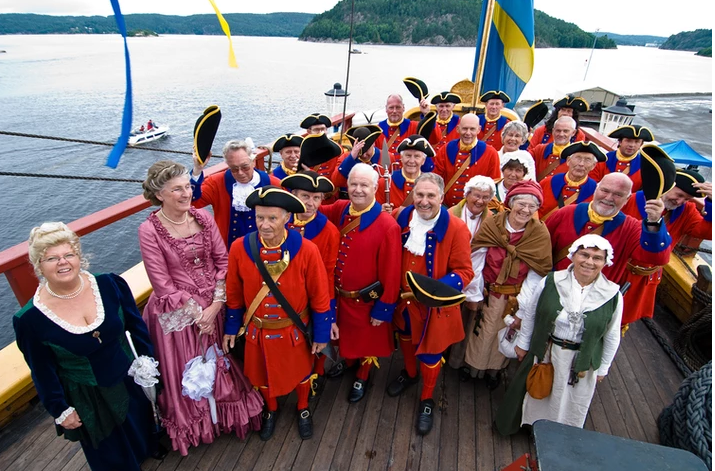

Comments are closed.